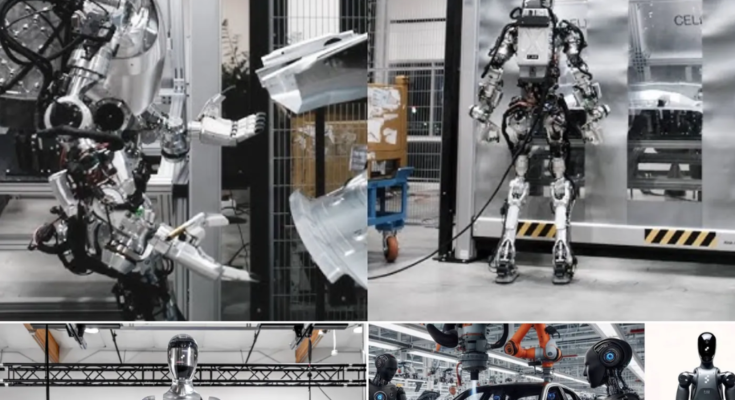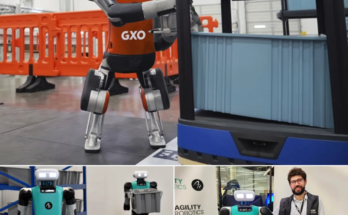Humanoid robots offer the unique ability to perform tasks traditionally carried out by human workers, but with enhanced precision, speed, and consistency. BMW’s collaboration with Figure aims to deploy these robots in various parts of the production line, particularly in car body repairs and metal sheet design. These tasks, which often require a high level of skill and attention to detail, can be optimized through the use of robotic automation.
Additionally, humanoid robots are well-suited to handle physically demanding tasks such as lifting heavy parts, assembling components, and performing quality checks. The ability of robots to work in tandem with human employees will not only improve production efficiency but also create a safer working environment by reducing the risk of worker injuries.
Innovative Applications of Robotics: Transforming BMW’s Production Lines
The deployment of humanoid robots at BMW’s manufacturing facilities will transform the way production lines operate. One of the most exciting uses of this robotic technology will be in warehouse storage. The robots will be able to move around the warehouse autonomously, organizing parts, managing inventory, and preparing materials for the next stages of production. By integrating humanoid robots into this process, BMW aims to speed up logistics and reduce human error, creating a more efficient and cost-effective workflow.
Moreover, the robots will work alongside human employees, assisting them with tasks that require precision and repetitive motion, thus freeing up workers to focus on more complex and creative aspects of production. This collaborative approach between humans and robots will significantly enhance both worker productivity and robotic efficiency, setting a new standard in automotive manufacturing.

BMW’s Vision for the Future: Full Integration of Robotics
BMW’s partnership with Figure is just the beginning. The company plans to fully integrate humanoid robots into its operations over the next 1-2 years. By doing so, BMW aims to become a leader in the future of automated manufacturing. The deployment of humanoid robots will not only improve manufacturing efficiency but also reduce operational costs, creating a more sustainable and profitable business model.
In the long run, BMW’s vision is to incorporate advanced robotics across various stages of production, from assembly lines to quality control. The company is betting on the success of this partnership to help redefine what is possible in the world of automobile manufacturing. With humanoid robots playing a central role, BMW is poised to revolutionize the industry.
The Impact of Robotics on the Global Automotive Industry
As robotics continues to evolve, BMW’s pioneering move sets a new standard for the automotive industry. The integration of humanoid robots into manufacturing processes is not just a technological advancement; it’s a cultural shift that signals the future of the global automotive industry. Other companies in the sector will likely follow BMW’s lead, looking to harness the power of robotic automation to boost production efficiency and stay competitive in a fast-changing market.

Humanoid robots are quickly becoming an essential part of the manufacturing process, especially in industries where precision, speed, and safety are paramount. By using robots to assist in tasks such as metal sheet design and warehouse management, BMW is not only enhancing its production capabilities but also setting the stage for a new era of automation in the automotive world.
BMW and Figure: Pioneering the Future of Robotic Automation
With its groundbreaking collaboration with Figure, BMW is taking a giant leap toward robotic automation in the automotive industry. As humanoid robots become more integral to BMW’s production processes, the company is well-positioned to lead the charge in automotive innovation. In the next 1-2 years, we can expect to see humanoid robots becoming a common sight in production plants worldwide, changing the face of the automotive manufacturing industry forever.
As BMW continues to push the boundaries of robotic technology, the world watches in anticipation of the transformational impact that humanoid robots will have on industries across the globe. The future is now, and BMW is leading the way.



